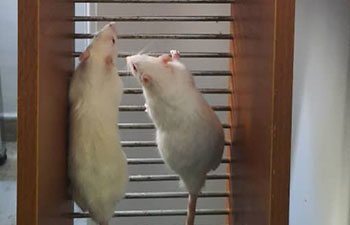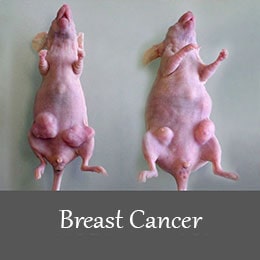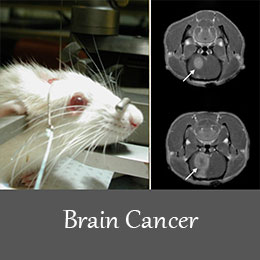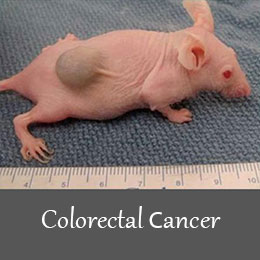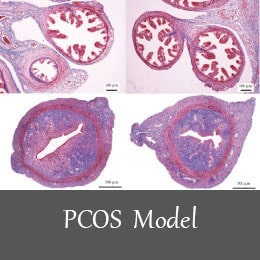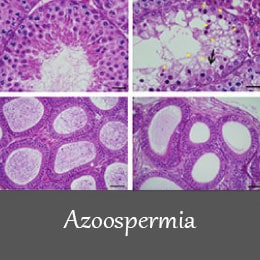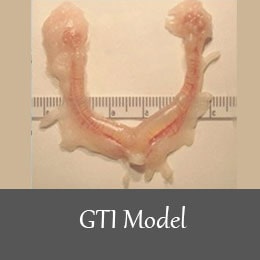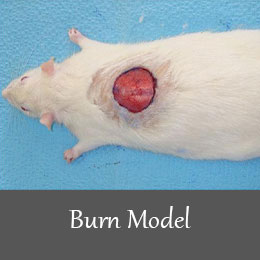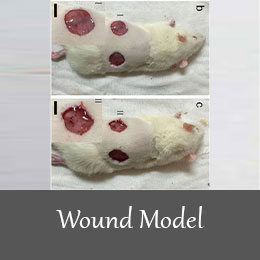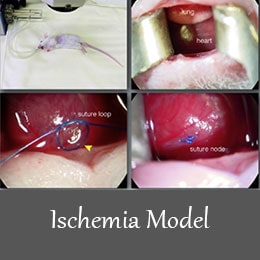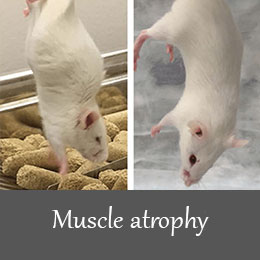animal-models-production
Creating all kinds of animal models based on the latest articles in the world
The use of animal anatomy and physiology models has greatly contributed to the advancement of science and research in the field of health. In this way, various animal models have been created in order to investigate the progress of treatment of various diseases. These animal models are classified as cancer, clinical and surgical models, drug and toxicology studies, medical research, regenerative medicine, and tissue engineering. RCO has so far succeeded in creating the following laboratory models in rats and mice, which can provide these types of models to researchers with full guarantee in the shortest possible time and at a reasonable price.
Types of induction of laboratory animal models
Induction of animal models
neurology and psychiatry
Induction of animal models
Metabolic and chronic
Induction of animal
models Types of cancer
Induction of animal
models reproduction
Induction of animal
models Other diseases
Induction of neuropsychiatric disease model


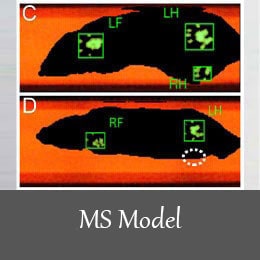

Model induction of metabolic and chronic diseases
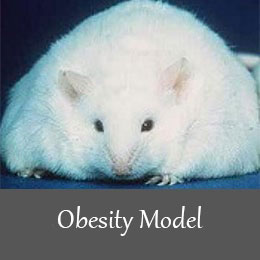
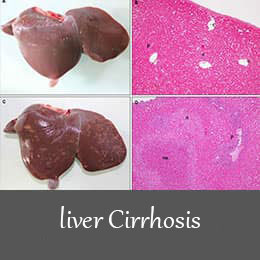

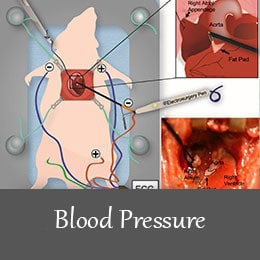
Disease models in laboratory animals in the field of neuropsychiatric diseases of neuropsychiatric diseases
Central and peripheral nervous system diseases and how to induce the disease model
The functional importance of the nervous system for living organisms is clear. As a result, knowing and identifying the mechanisms of nervous system disorders is valuable for better understanding and finding effective treatment. On the other hand, brain and nerve diseases can be grouped according to the type of injury, the body’s reaction to it, and the location of the injury. The type of injury can be congenital, infectious, trauma, vascular disorder, metabolic, poisoning, or lack of vitamins and minerals, and the place of occurrence of these injuries can be in any part of the nervous system, such as the meninges, peripheral nerves, gray or white matter of the spinal cord, brain, or cerebellum. Therefore, research in the field of nerve damage in in vivo conditions and the use of laboratory animals in this regard is inevitable. One of these techniques in animal research laboratories is the induction of a disease model, which is very important for research in the field of providing new treatments in the field of neurological diseases.
The use of animal models of common diseases in the nervous system
Today, more than 600 different types of neurological diseases have been diagnosed, only some of which have been curable so far, while for others there are not very promising treatment results. Therefore, the diagnosis of nervous system diseases and the efforts of researchers in universities and neuroscience research centers in order to achieve their treatment in the field of medical sciences are very important. Diseases of the nervous system are treated with one of the methods of drug treatment, surgery and radiotherapy. On the other hand, each of these treatments is divided into various branches, which widens the scope of research and research projects for researchers. The most common of these diseases are used to induce models in laboratory animals in the research of modern universities. RCO has attracted the attention of many researchers around the world due to its high experience and frequent induction of these diseases.
The most common and widely used induction of neurological disease model in laboratory animals
- ✅Induction and development of Brain ischemia
- ✅Induction and development of Alzheimer’s
- ✅Induction and development of Multiple Sclerosis
- ✅Induction and development of Parkinson’s
- ✅Induction and development of Epilepsy
- ✅Induction and development of Otism
- ✅Induction and development of Amyotrophic lateral scleroris(ALS)
- ✅Induction and development of Meningitis
- ✅Induction and development of spinal cord injury,SCI
- ✅Induction and development of Benign & malignant Tumors (Oligodendrogliomas,Craniopharyngioma,Meningioma,Hemangioblastoma,Adenoma)
- ✅Induction and development of Brain edema
Disease models in laboratory animals in the field of Metabolic and chronic disease of Metabolic and chronic disease
Metabolic and chronic diseases and how to induce them in animal models
Laboratory animals, especially rodents, are widely used to model human diseases in order to improve the understanding of the causes and progression of disease symptoms and diagnostic-research experiments. Chronic diseases such as obesity, diabetes and high blood pressure, collectively known as the metabolic syndrome, increase mortality. To control these diseases, research in induced models in laboratory animals is necessary. Animal models are laboratory techniques in in vivo conditions, which can be divided into two groups: natural animal models and genetic animal models, each of which has its own efficiency and characteristics. To date, many animal models such as genetic models, model induction with chemicals or diet, and genetically engineered models have been studied to elucidate the molecular mechanisms and functional changes associated with metabolic and chronic diseases.
The use of animal models of common diseases in the various metabolic diseases
Lifestyle and diet modulate metabolic syndrome and cause pathophysiological changes throughout the body. Therefore, it is very important to study new treatments for metabolic syndrome. For example, fatty liver is a reversible disease that occurs due to the accumulation of large amounts of fat in liver cells. Today, non-alcoholic fatty liver, which is caused by the lack of alcohol consumption, is known as a major health problem in human societies. Considering the increase in the number of patients with fatty liver disease in the world, as well as the direct role of people’s lifestyle and diet in getting this disease, research in the field of this disease and related diseases such as cardiovascular diseases, diabetes, blood pressure, Bile duct disorders and types of cancer are very important by inducing the fatty liver model in laboratory animals such as mice and rats. Induction of animal model with diet can be the most appropriate disease model used in studies.
The most common and widely used induction of metabolic disease model in laboratory animals
- ✅Induction and development of Diabetes
- ✅Induction and development of Fatty liver
- ✅Induction and development of Obesity
- ✅Induction and development of Hypertension
- ✅Induction and development of Insulin resistance
- ✅Induction and development of Liver Cirrhosis
- ✅Induction and development of Dyslipidemia
- ✅Induction and development of Hyperinsulinemia
- ✅Induction and development of Non-alcoholic fatty liver
- ✅Induction and development of Chronic obstructive pulmonary
- ✅Induction and development of Kidney failure
Disease models in laboratory animals in the field of Types of cancer of Types of cancer
Cancer and how to induce cancer modelsz
The diversity of oncology malignancies is influenced by the complex genetics and molecular signaling pathways established by tumor cells. Cancer research involves thorough knowledge of disease characteristics to develop efficient therapeutic strategies for future clinical use. With in vitro studies, important cellular data and information are made available to us. However, these data are limited by our inability to reflect the complex interactions of pathology in an organism. On the other hand, various animal models provide the possibility of laboratory analysis and provide reliable results. Except in the case of highly regulated clinical trials, geneticists and scientists do not use humans for their experimental research because of the obvious risks to life. Instead, they use various animal, fungal, bacterial and plant species as model organisms for their studies. Induction of animal models such as mice and rats is widely used in the research of various types of cancers due to its cost-effectiveness, easy access and variety of immune and immunodeficient strains. So far, mice have been used in more than 95% of in vivo studies of cancer models.
The use of animal models of common diseases in the various types of cancer
Cancer, as the second cause of death after cardiovascular diseases, has always attracted the attention of mankind all over the world, and this has made it a focus of research in the field of medicine and medicine. Studies over the past few decades have made some types of cancer treatable, but many other cancers still require more extensive investigation. In cancer research, using the induction of animal models of various types of cancer can help us understand the genetic basis of cancer and the role of specific gene mutations in the occurrence and development of cancer. In addition, it provides the possibility of developing and testing anti-neoplastic drugs. In addition, today with the development and recognition of personalized medicine, researchers seek to induce standardized and personalized tumor models that are more similar to human tumors. Breast cancer is the most common cancer diagnosed among women and one million cases are added every year. In the research of this cancer, the induction of breast cancer and its type of metastasis is used a lot, which has a process similar to the development of metastasis in humans. In fact, establishing a breast cancer model in mice will be useful for studying late-stage breast cancer and evaluating cancer drugs, chemical compounds, and herbal therapies.
The most common and widely used induction of types of cancer disease model in laboratory animals
- ✅Induction and development of Kidney cancer
- ✅Induction and development of Colorectal cancer
- ✅Induction and development of Glioma cancer
- ✅Induction and development of Lymphoma cancer
- ✅Induction and development of Leukemia cancer
- ✅Induction and development of Brain cancer
- ✅Induction and development of Colon Carcinoma cancer
- ✅Induction and development of Esophageal cancer
- ✅Induction and development of Gastric cancer
- ✅Induction and development of Hepatocellular Carcinoma cancer
- ✅Induction and development of Melanoma cancer
- ✅Induction and development of Pancreatic cancer
- ✅Induction and development of Bladder cancer
- ✅Induction and development of Prostate cancer
Disease models in laboratory animals in the field of Reproduction system of Reproduction system
Induction of reproductive system disease in animal studies
The structure of the human body is such that its cells cannot be considered as a separate unit. For example, in terms of physiology, in the human reproductive system, all the cells of different parts perform their tasks in harmony with each other. Disruption in this process leads to diseases of the reproductive system. To investigate the mechanism of these diseases, induction of disease models in laboratory animals is one of the valid methods in in vivo conditions in order to understand the disease process more precisely. Because the induction of disease models in animal studies provides pathology similar to the conditions of the same disease in humans, and as a result, valid results about diseases and treatment are obtained. The induction of reproductive system diseases model in laboratory animals has long been the focus of researchers in various fields of basic research, such as studies in the field of disease etiology and disease progression mechanisms. Animal models are still used as a valid and common technique in biological studies of diseases. Diseases that are induced in the reproductive system of laboratory animals such as mice and rats. These include: induction of reproductive system disease models such as endometriosis, testicular tissue changes, ovariectomy, azoospermia, polycystic ovary syndrome, ovarian hyperstimulation syndrome models induction, etc.
The use of animal models in the diagnosis and treatment of diseases in the reproductive system
Today, with the spread of reproductive system diseases, one of the main goals of working on animal models is to find effective drugs for reproductive system diseases. In addition to understanding the mechanism of how the disease develops and progresses, researchers are trying to find a safe way to treat it. For example, polycystic ovary syndrome is a common hormonal disorder in women that affects 5-10% of women, and the number of patients is increasing day by day. One of the consequences of PCO syndrome is infertility, since the treatment of infertility has a special place for human societies, with the introduction of the PCO animal model, extensive research in the field of understanding this disease, its treatment methods, the effectiveness of new drugs, and investigating the impact of environmental factors such as diet. , lifestyle and exercise can be done. Therefore, the induction of animal models is the focus of attention of biological, medical and pharmaceutical researchers. The most common and widely used diseases of the reproductive system are used for research and drug treatment in laboratory animals in the most prestigious universities of the world and infertility research centers. RCO has always been considered due to various experiences and repetition of disease model induction. Some of the diseases that are used in the RCO as reproductive system disease models to evaluate different infertility treatments in different conditions and different doses are as follows:
The most common and widely used induction Reproduction system disease model in laboratory animals
- ✅Induction and development of OHSS
- ✅Induction and development of PMS
- ✅Induction and development of PCOS
- ✅Induction and development of Endometriosis
- ✅Induction and development of Azoospermia
- ✅Induction and development of Cryptochidism
- ✅Induction and development of Ovarian cancer
- ✅Induction and development of Obstruction of fallopian tubes
- ✅Induction and development of Varicocele
- ✅Induction and development of Epididymitis
- ✅Induction and development of Birth defects
Disease models in laboratory animals in the field of Other diseases of Other diseases
Induction of disease models in animal studies
An animal disease model is a living, non-human, often genetically engineered animal that is used during the study of human disease in order to better understand the disease process without the risk of harm to humans. A variety of animal models serve as a bridge between laboratory and human studies. In this way, the induction of disease models in laboratory animals have had a great impact in investigating many pathological disorders
The use of animal models in the diagnosis and treatment of various diseases
Animal models of diseases are essential tools to reveal the pathophysiology of diseases and provide new approaches to develop treatments and find new drugs. Animal models are vital for understanding the various factors involved in the development of diseases such as mode of transmission, mechanism of action in the body, and pathogenesis of infectious organisms and host immunity. In addition, due to the need of human societies for fast and high efficiency treatment, animal models are also used in making and testing vaccines and therapeutic drugs. For example, burn complications are one of the painful injuries that have a high number of victims every year. Therefore, one of the common models in the research of burn accidents is the induction of the burn model in mice. Induction of the burn model is done to investigate the healing process and to study the effect of newly synthesized wound dressings, effective chemical and herbal medicines in the healing process.
The most common and widely used induction of various diseases model in laboratory animals
- ✅ Induction and development of Burn
- ✅ Induction and development of Wound
- ✅ Induction and development of Organ transplantation
- ✅ Induction and development of Hypoxia
- ✅ Induction and development of Addiction
- ✅ Induction and development of Myocardial ischemia
- ✅ Induction and development of Transgenic
- ✅ Induction and development of Viral Infection
- ✅ Induction and development of Muscular atrophy disease
- ✅ Induction and development of Immune system deficiency disease
- ✅ Induction and development of Urinary tract obstruction disease
Induction of laboratory animal models in today's world research
The use of animal models in the study of anatomy and physiology of the body dates back to the 6th century BC, and this trend has continued for thousands of years to achieve medical knowledge and research. Today, there are approximately 20 million animal model subjects in biomedical research, most of which are mouse and rat models. Today, biomedical research funding institutions invest more in animal model studies in the field of research and development of the pharmaceutical industry, and it is also likely that animal model induction will move more and more towards models that best describe human disease conditions and pathophysiology.
Education and skill training in the induction of animal models is necessary for which group of researchers?
Teaching and learning how to induce animal models is a necessary and mandatory thing for every person who plans to work in an animal studies laboratory as a laboratory expert. In addition, all researchers and students studying in the fields of biological sciences (physiology, genetics, cellular-molecular, microbiology, embryology, histology, cytology, biotechnology, animal sciences, cellular and developmental biology, anatomical sciences, biology Darya), paramedical trends, medicine, dentistry, nutritional and pharmaceutical sciences (pharmacy, medicinal chemistry, pharmacognosy, toxicology, pharmacology, pharmaceutics, clinical pharmacy, pharmaceutical biotechnology, radiopharmacy, pharmaceutical nanotechnology) as well as people from other academic fields such as polymer engineering , sports physiology, food industry, etc., who have defined the disease model in a laboratory animal in their thesis and research project, must have completed the complete theoretical and practical training on how to induce the animal model.
Induction of animal models for research projects and student theses
Today, part of the validity of research projects and theses in the fields of biology and medicine is obtained by studying and interpreting the results in the living organism. Therefore, the induction of disease models in laboratory animals as an available and valid laboratory technique in the living environment has a special place in research projects and studies of human diseases and is always trusted by scientific communities.
For example, when in a research project, a new drug is designed and synthesized to treat a disease, in order to confirm the effect of that drug, clinical studies are needed in the body of a living organism. Therefore, at this stage, in order to perform a confirmatory test, the induction of the disease model is used. Human sample replacement is one of the most reliable laboratory methods. For this reason, it is necessary for students and researchers in most of the scientific and research projects of theses to dedicate a part of their studies to research in animal models so that the results can be published in the world’s prestigious journals and entered in the industry sector.
Why are laboratory animals used in scientific research?
The discovery and development of medicine is the result of continuous experiments and the examination of its results in laboratory animals is quite clear. According to the theory of speciation, all species have a common ancestor. In other words, the components of the organism’s genome are almost the same, and on the other hand, the cause of most diseases lies in the genome, so this reason is enough to consider the function of the cells of the human body to be similar to that of laboratory animals. So, according to this hypothesis, all kinds of experiments on animals are possible to achieve progress in medical knowledge. In other words, large parts of animal and human biology work in the same or very similar ways. This similarity exists not only in vital functions such as breathing, digestion, movement, vision, hearing and reproduction, but also at the level of basic cellular and molecular processes. This is because we can study the way the body works and the signaling pathways that cannot be examined in humans by conducting experiments on laboratory animals.
The most common laboratory animals to induce the disease model
In order to induce the disease model, different laboratory animals can be used based on the research subject, physical and genetic characteristics of the animal. Two groups of laboratory animals, which are rodents and non-rodents, can be used.
Rodents include mice, rats, guinea pigs, hamsters, and non-rodents include dogs, rabbits, and monkeys. The vast majority of animal models are mice, but other animals are also used. Rabbits suffer from arteriosclerosis (hardening of the arteries) as well as diseases such as emphysema and birth defects, and dogs naturally suffer from cancer, diabetes, cataracts, and bleeding disorders such as hemophilia.
Rats and mice have different breeds and species that have various uses in creating disease models. For example, the c57BL/6 mouse strain is used to induce a variety of disease models, including severe obesity, hyperglycemia, hyperinsulinemia, hyperlipidemia, and non-alcoholic fatty liver disease, and the BALB/c strain is used to induce a model of infectious diseases and cancers.
The most common types of laboratory mice to induce the disease model:
- ⚪ NMRI mice (for simple disease models)
- ⚪ balb.c mice for cancer models
- ⚪ C5V mice (black mouse)
- ⚪ Rat
- ⚪ etc
To read other types of laboratory mice and laboratory animals, click on the buttons below
Creation of laboratory animal models and ethical principles of working with laboratory animals
The disease models in laboratory animals is considered acceptable from the point of view of ethical principles only in cases where the correct and principled treatment of the created model is done after conducting research. Therefore, it is necessary for every person to be trained and observe the ethical principles of working with laboratory animals before performing experiments on laboratory animals. Obtaining the code of ethics, which includes the necessary standards and guidelines for working with laboratory animals, is important and necessary for all research projects and student theses. For example, the appropriate selection of the laboratory animal breed, the induction method and the use of standard protocols for the induction of a cancer model is one of the conditions of the ethical principles of working with laboratory animals that the researcher must comply with.
How to induce the disease model in laboratory animals
- Cause disease by substances
- Cause disease by surgery
There are three models of laboratory animals, which are homologous, isomorphic and prognostic. The homologous model has the same symptoms and treatment methods as humans. The isomorphic model of symptoms and treatment methods is similar to humans, and the predictive model is similar to a human disease only from a few symptoms. There are various valid and standard methods for inducing different types of diseases in laboratory animals, and the selection of the appropriate method according to the desired disease model depends on various factors such as the age and gender of the animal, which the researcher must keep in mind. These induction methods include artificial manipulation or experimental induction methods such as surgical methods, chemicals, prescribing some chemical drugs, or applying some environmental stimuli such as sound stress and the second category of spontaneous methods such as genetic manipulations. and mutated or genetically modified method, which the animal may have congenital disease. To create Alzheimer’s disease model in rats and mice, two induction methods are used, such as drug administration and spontaneous method, such as a transgenic mouse expressing human APP695 and having amyloid precursor protein mutation.
Actions after induction of the disease model in the laboratory animal
After inducing the disease model in the animal, based on the type of the induced model and the target animal, the maintenance conditions such as temperature, humidity, light, diet, etc. should be provided for the animal models in order to harm the animal during the studies and analysis. do not In addition, the researcher must validate the induced disease models in order to carry out the research plan with full confidence, and also to present the results in the valid scientific journals, proof of the induced model approval is needed. Confirmatory laboratory tests include animal study tests, pathology techniques, and molecular techniques that vary based on the type of model created.
Confirmatory tests of induced disease model in laboratory animal
After performing the induction protocol of the desired disease model in the laboratory animal, in order to ensure whether the target animal model has been created or, in simpler words, whether the target disease has been induced in the animal after passing the treatment period, valid laboratory methods called approval tests must be used. The implementation of one or more confirmatory tests depends on various factors, including the type of induced disease model, laboratory conditions and facilities, and the type and gender of the animal must be done. Confirmation tests include tumor size measurement, checking and measuring the animal’s weight, behavioral tests, and blood sampling.
One of the confirmatory tests of the induced animal model is the use of histological methods. After creating the model, a part of the desired tissue is separated by surgical and biopsy methods, and in the histology laboratory, one or more of different laboratory techniques, including specific staining, immunohistochemistry, and specific marker and protein assays, are performed on the isolated tissue. It will be given. The results show the approval or disapproval of the created disease model.
Types of treatment methods after induction of the disease model
Undoubtedly, one of the most important reasons for inducing and causing disease in laboratory animals is research on the treatment of diseases. Therefore, the drug under study should be prescribed according to the created animal model and the effect of the drug on the treatment process should be checked. The treatment protocol can be different according to the type and pharmacokinetics of the drug. These methods of use include injection, inhalation (spray and direct induction in the trachea), injection (intravenous, intraperitoneal, cutaneous, subcutaneous, etc.), oral method (gavage), rectomy method, etc. The duration of treatment can be different according to the type of model created, and in most protocols, the treatment period is up to 30 days. One of the new methods of treatment can be considered according to the science of exercise physiology, which are very helpful in the treatment process. Therefore, defining the protocol of synthesized herbal, chemical, nano, etc. drugs along with endurance and resistance sports exercises such as ladders, treadmills, swimming, running inside the rotarod can help the treatment process of the induced model.
Treadmill exercise therapy
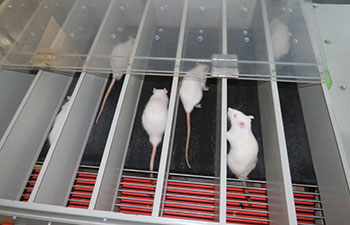
Exercise therapy with swimming
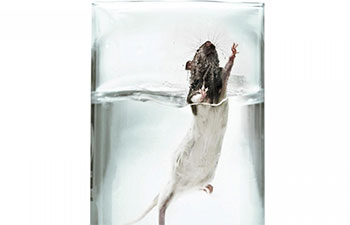
Exercise therapy with ladders
